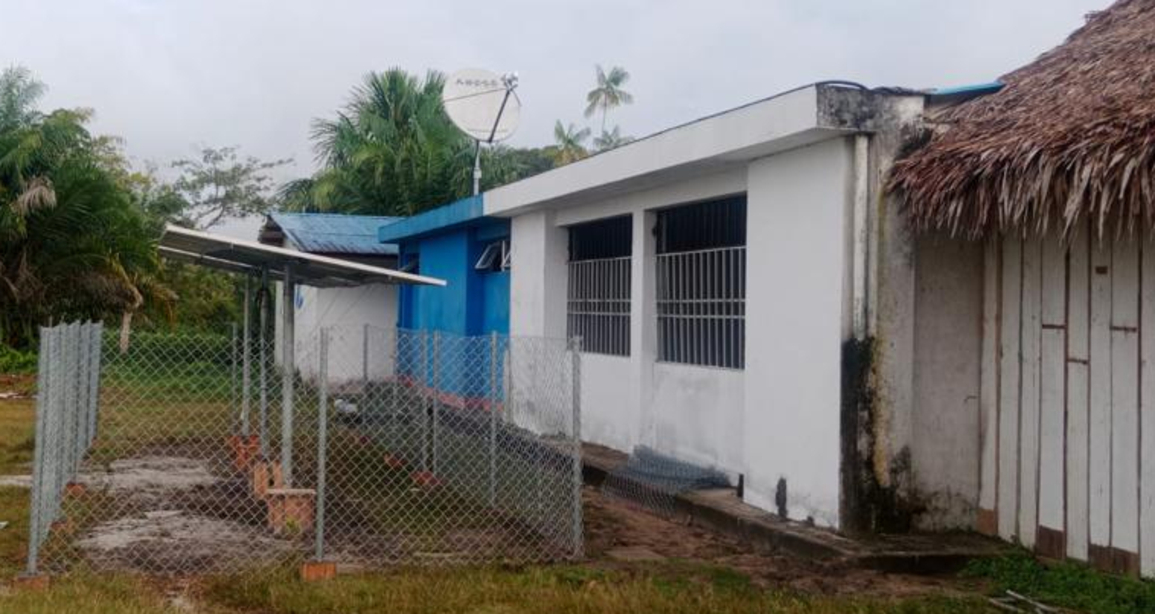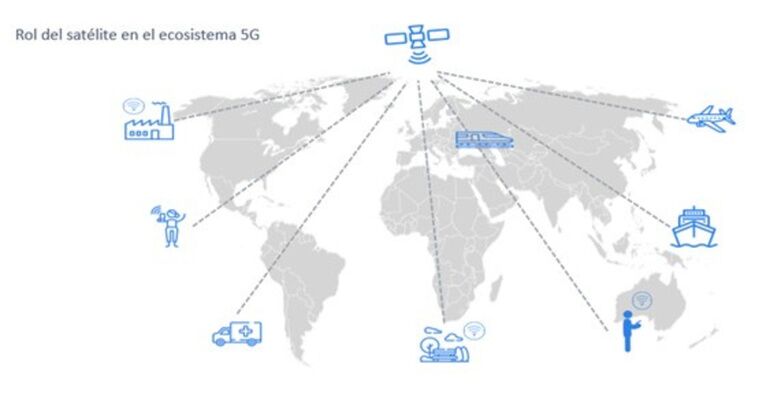
World Radiocommunication Conferences (WRC) are held every three to four years to review and revise the Radio Regulations, the international treaty governing the use of the radio-frequency spectrum and the geostationary-satellite and non-geostationary-satellite orbits, among other matters.
The next 2023 World Radiocommunication Conference (WRC-23) will be held from 20 November to 15 December 2023 in Dubai, United Arab Emirates. Several Agenda Items will be discussed within the framework of the International Telecommunications Union (ITU).
Decisions made by the ITU Member States at WRC-23 significantly impact satellite services by determining spectrum allocation, interference management, access to the orbit-spectrum resources, regulatory frameworks, and the adoption of emerging technologies. These decisions shape the landscape for satellite operators and ensure the efficient use of radiofrequency spectrum globally.
Participation in WRC-23 is of utmost importance to Hispasat. It is a critical step to ensure that our satellite services can thrive in a competitive and evolving wireless communication landscape while maintaining global coordination to avoid interference issues. In essence, attending WRCs is about safeguarding the present and the future evolution of satellite services.
At this Conference, we see great opportunities for the space sector, but also threats that could impose severe restrictions to the satellite services currently provided.
The successful harmonization of the 12.75-13.25 GHz band for Geostationary Satellite Orbit (GSO) space stations in the Fixed-Satellite Service (FSS), as proposed in Agenda Item 1.15 of WRC-23, holds significant benefits for the deployment of maritime and aeronautical Earth Stations in Motion (ESIMs). This harmonization facilitates the efficient utilization of this spectrum range for satellite communications.
Several WRCs in the past have introduced the regulatory framework in the Radio Regulations for the operation of ESIMs communicating in the standard Ku and the Ka bands, for GSO space stations in the FSS.
The exponential demand for satellite services for maritime and aeronautical ESIMs reflects their growing importance in ensuring real-time connectivity, safety, and operational efficiency in these sectors. As vessels and aircraft increasingly rely on data-intensive applications, this demand underscores the need for expanded frequency bands and harmonization efforts to meet these evolving connectivity requirements. Satellite services are now indispensable for maintaining communication everywhere.
This demand for inflight and maritime connectivity can be partially satisfied by additional capacity obtained by allowing operation of ESIM communicating with GSO space stations in the FSS in the frequency band 12.75- 13.25 GHz (Earth-to-space).
Hispasat supports the development of a regulatory framework to allocate new frequency ranges to the FSS. The new allocation would provide satellite operators the flexibility to satisfy Broadcasting-Satellite Service (BSS) or FSS service demand in the same frequency band indistinctly and in many cases without the necessity to use exclusive payloads depending on the service.
In particular, Hispasat supports the allocation in the 17.3 – 17.7 GHz band to the FSS (space-to-Earth) in Region 2, in accordance with Agenda Item 1.19 of the WRC-23, while ensuring the protection of BSS feeder links (Earth-to-space) subject to Appendix 30A, BSS (space-to-Earth) and the operation of GSO space stations in these bands across all Regions.
Expanding the FSS allocation by 400 MHz would add contiguous spectrum in Region 2 for gateways and user terminals alike, responding to the growing demand for broadband satellite service throughout in Americas.
Hispasat recognizes the importance of developing 5G networks and their potential socio-economic impact at a worldwide level, both from the terrestrial and satellite components, which will also play a crucial role in ensuring that 5G services reach all parts of the territories. However, to ensure proper technology development, it is important to ensure compatibility among radiocommunication services that share the same frequency bands or operate in adjacent bands.
Numerous technical studies and practical experience gained in countries deploying International Mobile Telecommunications (IMT) systems, e.g. in the C band, clearly demonstrate that IMT and FSS systems are not compatible in the same frequency band. To achieve compatibility in an adjacent band, a series of technical measures are required before deploying 5G terrestrial networks to ensure compatibility and the continuity of existing services in those bands.
Hispasat encourages for maximizing the use of existing IMT allocations and prioritizing spectrum repurposing and optimization over seeking new allocations. This can be applied to both Agenda Items 1.2 and 1.3 of WRC-23 and is relevant to IMT proposals for WRC-27 in frequency bands that are critical and heavily used by satellite services. The Global Satellite Industry Association (GSOA), representing the satellite industry, has carried out extensive analysis regarding their impact on FSS systems, that offers valuable guidance for WRC actions to safeguard critical satellite services that have no reliable, cost-effective alternatives.
Hispasat sees a significant risk in modifying the Equivalent Power Flux Density (EPFD) limits for non-geostationary satellites in Article 22 of the ITU Radio Regulations. This could disrupt a delicate and carefully crafted compromise that has been established over a significant period of time. This compromise balances the need for equitable spectrum access among all satellite systems while providing crucial protection to geostationary satellites. Geostationary satellites rely on these protections to maintain stable and interference-free operations. Any changes to this compromise could lead to increased interference, jeopardizing the reliability and performance of geostationary satellite services, which play a vital role in global telecommunications, broadcasting, and data transmission.
At the upcoming WRC-23, there are several agenda items aimed at facilitating the development of Non-Geostationary Satellite Orbit (NGSO) systems. It's important to note that reviewing the EPFD limits at WRC-27 is not essential to achieve this goal. The already existing agenda items and other matters discussed at the ITU encompass a range of regulatory and technical considerations that can support NGSO development without the need for EPFD limit revisions. Therefore, maintaining the current EPFD limits is a prudent choice to preserve the stability and predictability of the regulatory framework, while allowing NGSO systems to thrive through other measures specifically designed to address their requirements.
Hispasat identifies potential opportunities within the Agenda Items in the Agenda Items that may be discussed at WRC-27. In general, the prospect of new allocations to the FSS, relaxed constraints on specific spectrum usage, and harmonization of spectrum use in support of mobility services, contributes to the advancing of the evolution of satellite services.
Specifically, topics like reviewing the antenna diameter and power constraints in the Radio Regulations for the 13.75-14 GHz band, as well as the studies concerning the utilization of the Q/V frequency band for aeronautical & maritime ESIMs communicating with geostationary space stations in the FSS, are points of discussion that can significantly contribute to the growth and sustainability of the satellite industry.

Varias decenas de estudiantes de la escuela rural del departamento de Guainía han iniciado su proceso de transformación digital gracias a nuestra solución de internet satelital de banda ancha rural, te lo contamos…

25 octubre 2023
Observar la superficie terrestre desde el espacio ha sido un propósito del hombre desde inicios del siglo XX.

Dos años después, volvemos al Mobile World Congress con un amplio abanico de novedades en el ámbito de la conectividad vía satélite para entornos remotos y en movilidad que podréis descubrir en nuestro stand 7C50, ubicado en el hall 7.

Este 2021 que ahora termina, marcado por la pandemia y las medidas encaminadas a reducir su impacto, ha sido para HISPASAT un año repleto de buenas noticias e iniciativas de gran importancia para el impulso de la conectividad en España y el continente americano.

El 5G se ha definido desde su origen como una red de redes, fruto de la confluencia de distintas tecnologías hacia un escenario convergente. Si las generaciones anteriores (2G, 3G, 4G) se enfocaban en conectar a las personas, el 5G pretender conectar en todo momento objetos y personas estén donde estén, tanto con otras personas como con otros objetos.